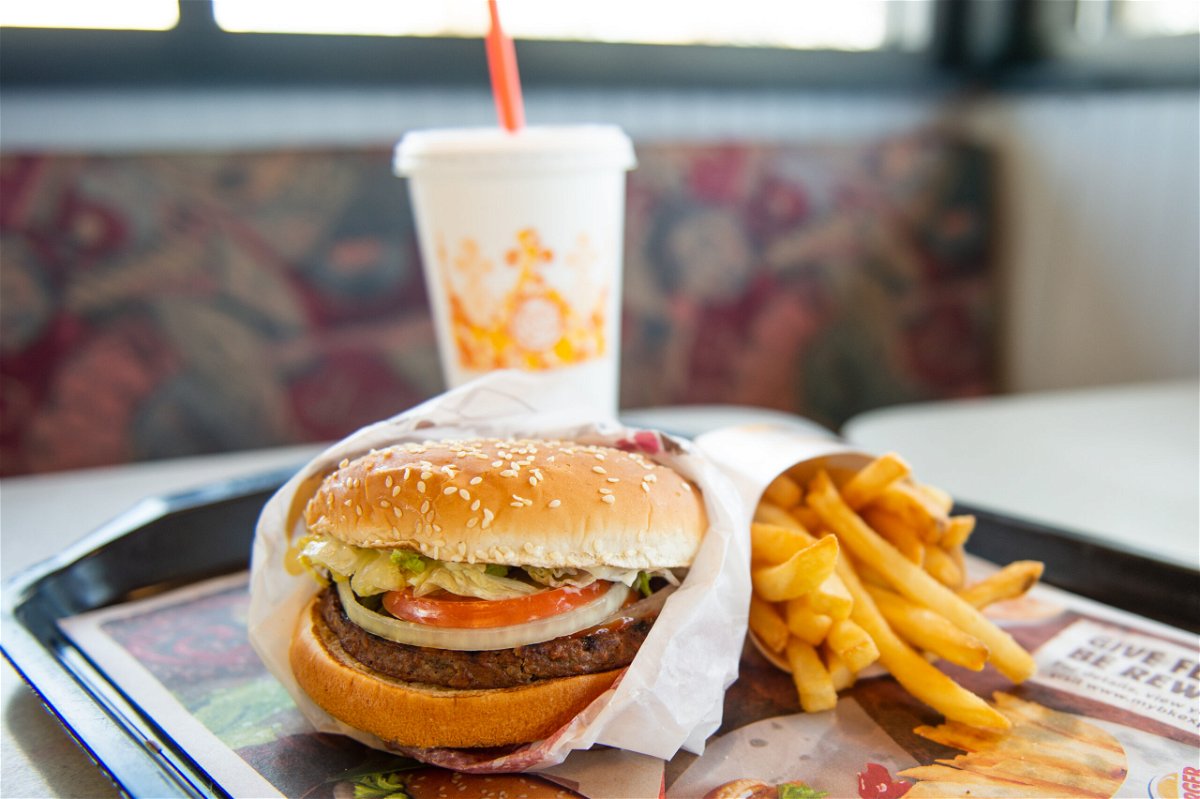Beef burger or fish sandwich? These menu labels encourage people to eat less red meat, study shows

The Impossible Whopper from Burger King includes a plant-based patty from Impossible Foods.
By Laura Paddison, CNN
A little more information on restaurant menus could encourage people to choose meals with a lower climate footprint, according to a new study, which found that adding climate impact labels to foods was an effective strategy to reduce red meat consumption.
The food system is responsible for a staggering one-third of planet-warming emissions, and beef is the biggest culprit. Yet Americans eat a huge amount of it, consuming an average of 57 pounds per person per year, compared to a global average of 14 pounds.
As the links between food production and the climate crisis become clearer, restaurants are increasingly adding more vegetarian and vegan options, and some are signaling interest in using climate labels on food items. But there is a lack of data on the best design to help customers make informed choices.
To try to help fill that gap, researchers conducted randomized clinical trials asking more than 5,000 adults in the US to imagine they were in a fast-food restaurant, and pick an item from a menu with options including beef, chicken, fish, plant-based meat substitutes and salads.
Participants were offered one of three menus: a control menu with QR labels next all items; a positively framed menu with green labels to symbolize low climate impact next to chicken, fish or vegetarian options; and a negatively framed menu with red labels to signal a high climate impact next to beef items.
The study, published Tuesday in the medical journal JAMA, found that the traffic-light climate labels were effective at encouraging people to opt for more climate friendly foods, and that the red warning labels were most effective.
People choosing from menus with high climate impact labels were 23% more likely to opt for a more sustainable meal than those with a control menu, the researchers found. Those choosing from menus with green low climate impact labels were 10% more likely to go for a more sustainable option.
Julia Wolfson, the study’s lead author and an associate professor at the Johns Hopkins Bloomberg School of Public Health in Baltimore, said nudging people to make even small changes in the amount of meat they eat “can have really measurable impacts on reducing food systems related climate change and climate change overall.”
For now, climate labeling on food products remains relatively rare, and those companies that do add them tend to use positive labels that highlight low climate impacts. For warning-style labels to be adopted on a large scale, Wolfson said, “legislation or regulation may be necessary.”
But, she added, these may not be the only effective design. “Other future research could be required to investigate different design options that may have a higher impact still using that positively framed label.”
The study follows research published by the World Resources Institute in 2022, which examined people’s responses to 10 different sustainability messages on a hypothetical restaurant menu. Some of the messages proved particularly successful. Those who saw the message “swapping just one meat dish for a plant-based one saves greenhouse gas emissions that are equivalent to the energy used to charge your phone for two years” were twice as likely to pick a low-carbon food option than those whose menu had no message.
The-CNN-Wire
™ & © 2022 Cable News Network, Inc., a Warner Bros. Discovery Company. All rights reserved.
